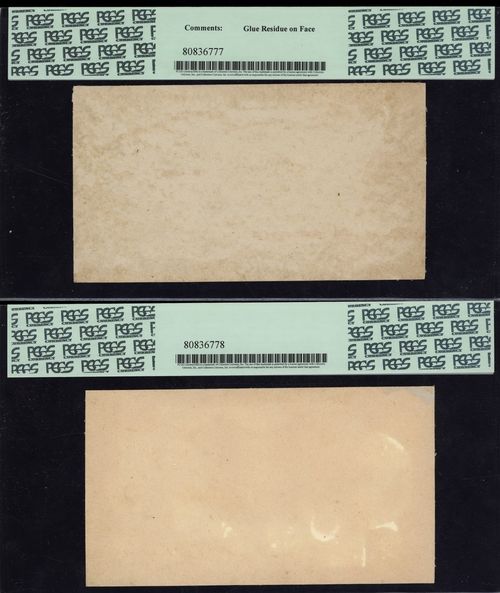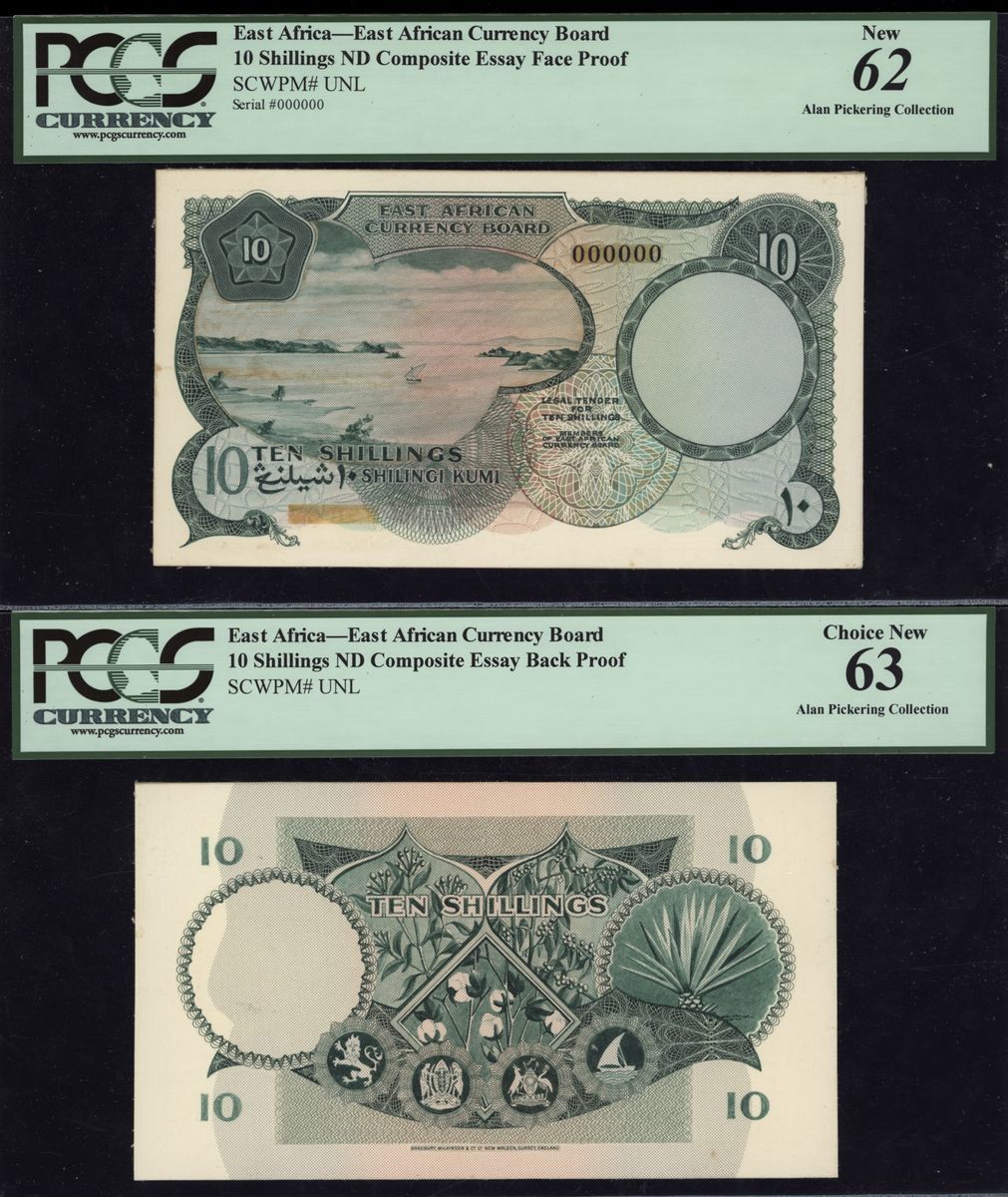Auction: 391 - World Banknotes at NY INC
Lot: 89
East African Currency Board, obverse and reverse hand executed essay of an unadopted design for 10 Shillings, no date, serial number 000000,
the East African Currency Board was established in 1919 to oversee and supply currency for the British colonies in British East Africa, following Britain's acquisition of mainland Tanzania from Germany at the end of World War I. Initially, the board managed the territories of Uganda, Kenya, and Tanzania (excluding Zanzibar), with Zanzibar joining the currency area in 1936. The East African Shilling was adopted in parts of Somalia, Ethiopia, and Eritrea during British wartime control from 1941 to 1965, along with its use in the Aden colony and protectorate from 1951 to 1965.
Operating from premises at 4 Millbank, London SW1, formerly the offices of the Crown Agents, the East African Currency Board played a crucial role. Its primary function was to issue and maintain the East African shilling's value on par with the British Shilling, ensuring sufficient backing by sterling securities.
In the course of its operations, some essays were produced, including an intriguing hand-executed design for a 10 Shilling banknote. This unissued design, lacking a specific date and identified by the serial number 000000, is predominantly green. The obverse portrays a small sailboat on Lake Victoria, set against a backdrop of rocks. In stark contrast, the reverse displays the national arms near the lower border, accompanied by depictions of a coffee plant with berries and other flowers. Both sides are markedly distinct from any issued notes, representing a unique and unadopted artistic endeavour.
As East African territories gained independence (Tanganyika in 1961, Kenya in 1963, and Uganda in 1962), the East African Currency Board was dissolved in 1965. This marked the conclusion of the East African Shilling era, and each independent nation introduced its own currency.
In 1967, the East African Currency Board was succeeded by the independent central banks of the constituent countries: Bank of Uganda, Central Bank of Kenya, and Bank of Tanzania. This transition reflected the changing dynamics of the region as these nations gained independence and took control of their monetary policies
(Pick not listed), in PCGS holder 62 NEW and 63 Choice New. Same colour scheme and reverse type to the 1964 10 Shillings, lovely and unique (1 pair)
Estimate
£500 to £800
Starting price
£500







